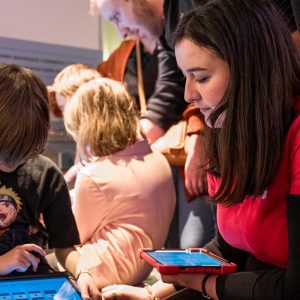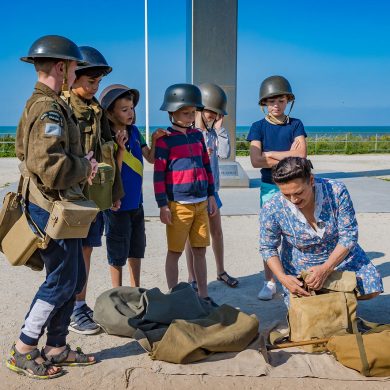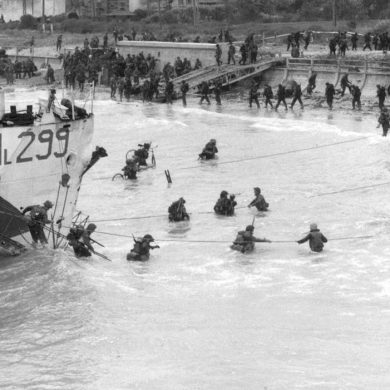Updated on 29 April 2024
Reading time: 4 minutes
Holidays to Normandy offer unparalleled opportunities for discovery, providing kids with a hands-on history lesson that beats any book. On this family visit to the Juno sector of Normandy’s D-Day landing beaches, we opt for the immersive “Explore Juno” tour at the Juno Beach Centre. Led by a young guide from Quebec, about the same age as the soldiers sent to the front, we uncover the remarkable story of Canadian involvement in the liberation of France, uniting history with the present in a moving and inspiring exploration for the whole family.
At the museum’s entrance, snapshots of the Quebecois guides conducting tours are displayed. As our guide for the day, Camille, approaches, her charming Canadian accent captivates us instantly.
AN Immersive Video Experience to Begin
The first room plunges us in the solemn atmosphere of the Allied Landing. Seated within a replica of a landing craft, we watch a 4-minute video projected at 180 degrees on the walls, vividly capturing the Canadian mindset during World War II. The children are absorbed in the film, keeping silence throughout. One phrase particularly resonates: “such a beautiful country devastated.” The second room delves into Canada of the 1930s, providing valuable context.Our guide positions herself on a sprawling map of Canada on the floor—a territory 16 times the size of France, yet notably less populated!
Touchscreen Tablets and Poppies!
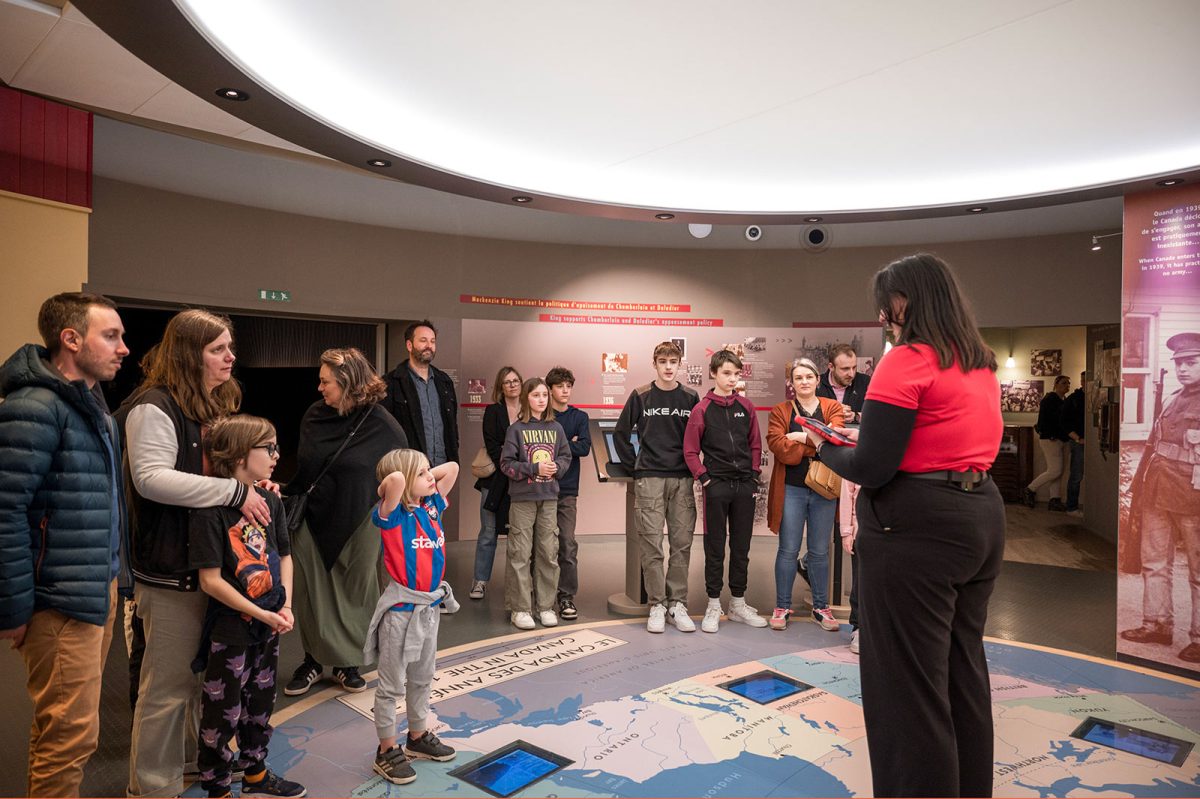
Camille then outlines our mission with enthusiasm. Providing each team with a touchscreen tablet, she explains that interactive modules are key components of our experience. As we progress through the tour, our goal is to collect poppies by answering questions on the tablet. So why poppies? They symbolize peace, as they were the first flowers to bloom on the battlefields after World War I.
Passing On the Values of Peace
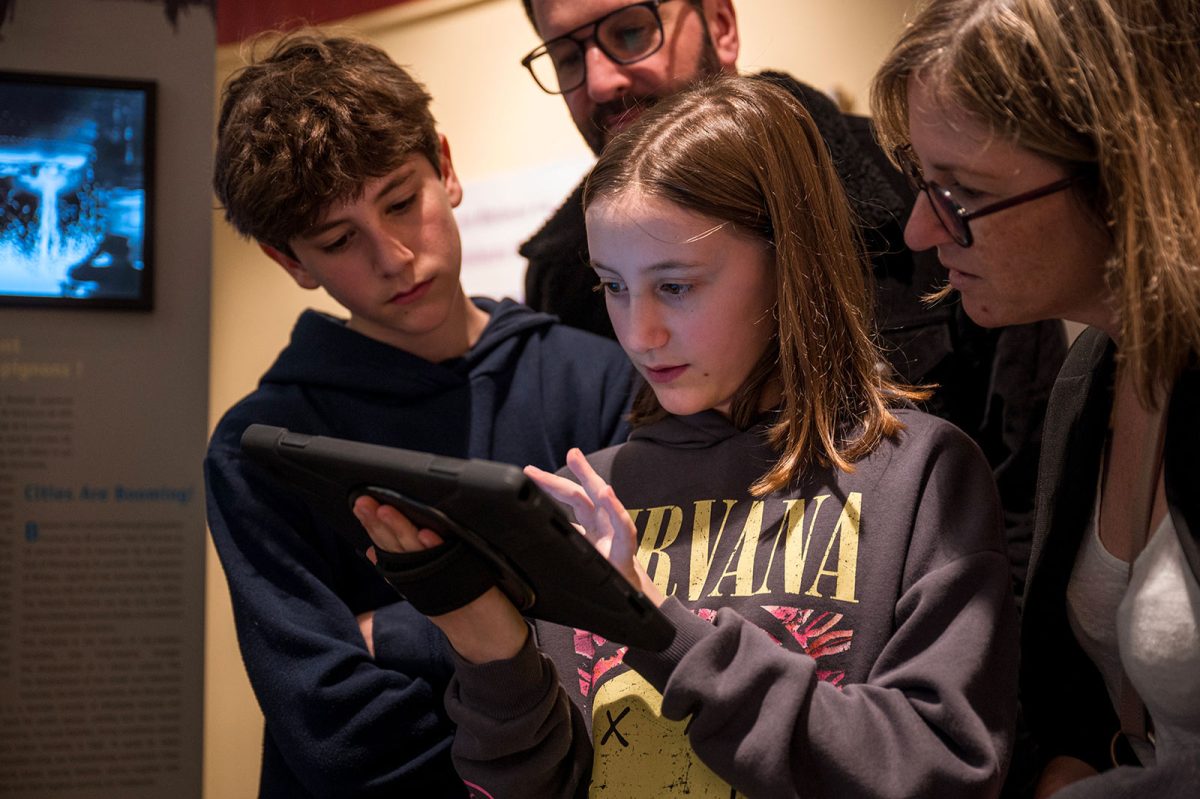
We hop from module to module, teaming up to tackle the questions together. Whenever one of the families hits a snag with a question, Camille is there to offer guidance. And when our daughter, with a little help from her dad, nails a correct answer, she bursts with excitement—it’s a joy to behold! Additionally, I observe that many questions are aligned with the museum’s strong advocacy for sustainability.
Paying Tribute to the Heroes
In the second-to-last room, tribute is paid to the 45,000 Canadian soldiers who sacrificed their lives for France during World War II. Overhead, their names, often accompanied by their age at the time of their passing, scroll by. With the guide, we get a chance to discuss the failure of the Dieppe Raid in August 1942, during which Canadian forces suffered significant losses. The guide then mentions the “funnies” (quirky tanks, quite literally). These amphibious tanks were designed following the unsuccessful Dieppe landing attempt, which provided crucial insights.
Meaningful Discussions with our guide


In the final room, a stark contrast awaits. The high ceiling and abundant light create a striking atmosphere, with poppies dominating the scene. Through vast windows, the sea is visible. Children settle comfortably on plush floor cushions as Camille stands before a large touchscreen. The debrief begins! The guide encourages the kids to participate in discussions. “What does remembrance mean?” she asks. “Does anyone know what a veteran is?” . The children eagerly chime in. Then, she asks each of them what they enjoyed the most. Each child’s experience is deeply personal: for César, it’s the joy of crossword puzzles; my daughter found resonance in the portrayal of women’s wartime contributions; and for Charlie, the scrolling names of Canadian soldiers left an indelible mark, each reflecting the exhibition’s profound impact in their own way.
Taking Memories Home
As our tour draws to a close, Camille gifts us each a poppy (the flower of remembrance) and a Canadian flag pin. This experience proves deeply enriching for both us and our children. With heartfelt thanks to our guide, we venture outside. Pausing by the memorial stones at the museum’s entrance, we make our way to the vast expanse of sandy beach where these liberators once landed. Here, in the open air, we take time to reflect as a family. Paying tribute to their memory and walking side by side, with a new appreciation for the ground they once trod and for the freedom we enjoy today.

Useful Information
Juno Beach Centre
Voie des Français libres
14470 Courseulles-sur-Mer
www.junobeach.org
Family Tour “Explore Juno: Following in the Footsteps of Canadians”
Book by calling + 33 (0)2 31 37 32 17 or via email at [email protected]
Duration: 1 hour 30 minutes
From 6 years old.
Children must be accompanied by an adult.
From 2 to 5 families, up to 30 people maximum. Subject to cancellation if fewer than 2 families are registered.
Dates 2024
April 28th / May 19th / June 23nd / July 21nd / August 18th / September 15th / October 20th / November 17th / December 29th
RATES 2024
Adult rate: 8.50€ (see museum website) + 2.50€ extra per person for the Explore Juno guided tour.
Family rates are available.
Free for children under 8 years old. Free for individuals with disabilities and reduced rate for their companion.
Juno Beach Centre is a proud partners of the Normandy Low Carbone Rate scheme which rewards eco-friendly ways to get to the museum with discounts!
How to get There (using public transportation)?
The small coastal town of Courseulles-sur- is accessible via Nomad car, departing from Caen or Bayeux, two cities with excellent train connections.
For more information, please visit the Tourism Office website.
Travelling to the Juno Beach Centre by bike or public transport? Don’t miss out on the Normandy Low Carbone Rate scheme and enjoy entry discounts!
Accessibility for All
The Juno Beach Centre ensures accessibility for all visitors, offering a single-level layout suitable for individuals with motor disabilities or reduced mobility.
Additionally, the museum provides facilities for visitors with visual or hearing impairments, as well as those with cognitive impairments, in line with inclusive principles.
Check out the museum’s website for further information on accessibility.
WHERE TO SLEEP?
Résidence Pierre et Vacances Le chant des oiseaux, in Courseulles-sur-Mer
Camping Donjon De Lars****, in Courseulles-sur-Mer
WHERE TO EAT?
Afternoon tea after the visit? Here’s two of our favorite spots:
Coffee and tea, 12 quai ouest in Courseulles-sur-Mer
Les p’tits curieux, tea salon, gourmet snacks and wine bar
Right next to the museum, La Maison bleue has a great lunch and dinner menu Specialties include seafood and fish.

